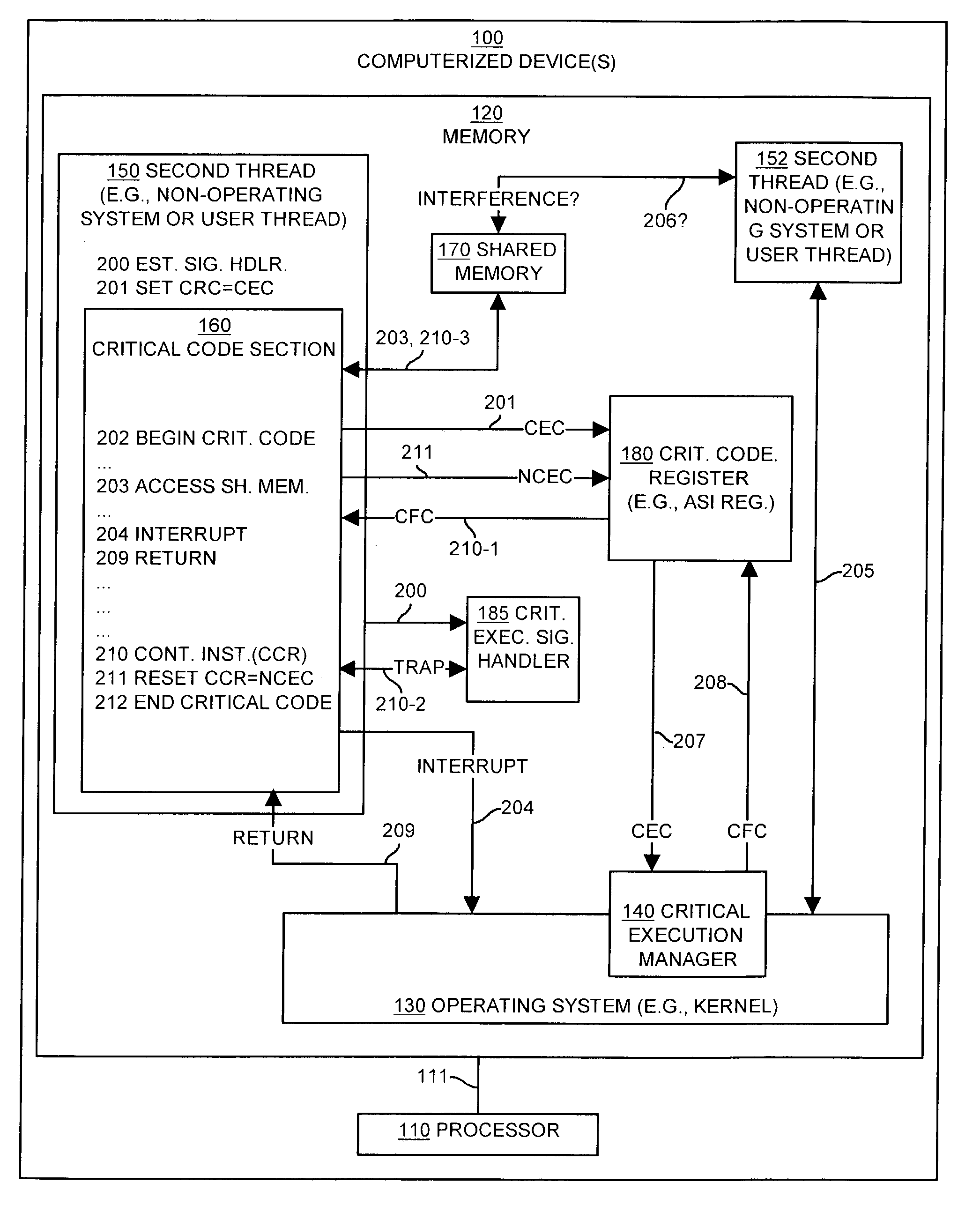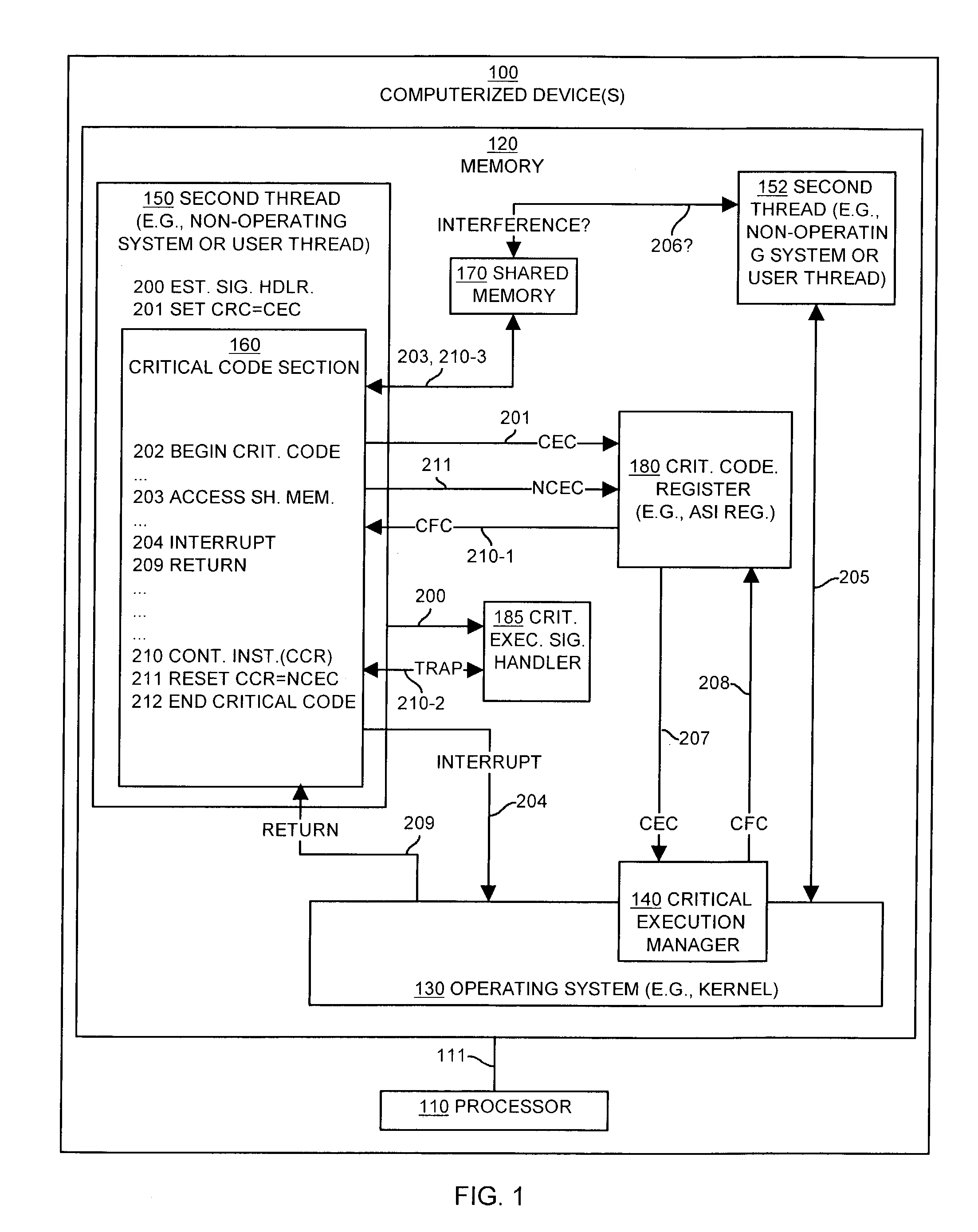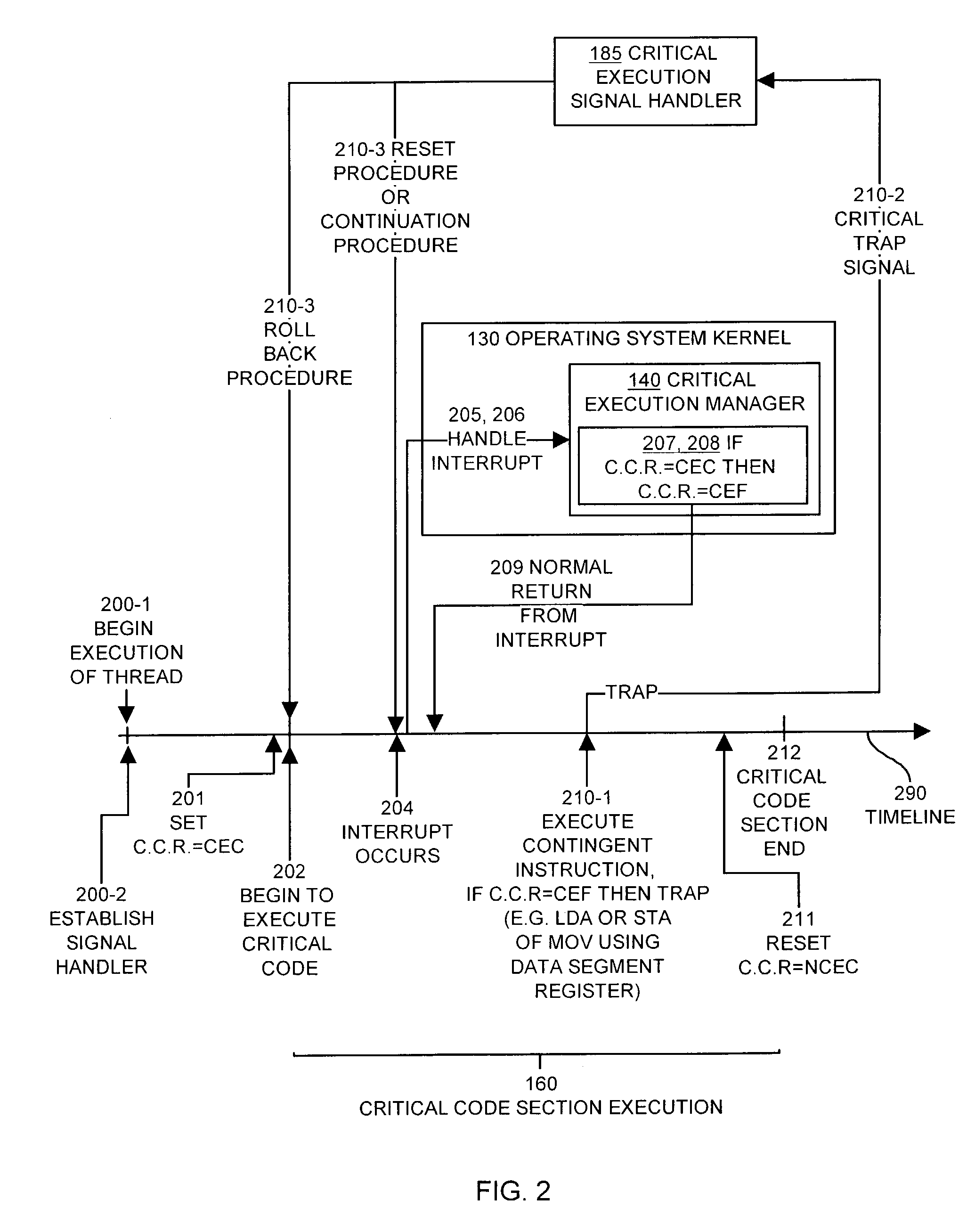Methods and apparatus for executing code while avoiding interference
a technology of avoiding interference and executing code, applied in the direction of computation using denominational number representation, multi-programming arrangement, instruments, etc., can solve the problems of wasting valuable processing cycles, unnecessary processor overhead, and “convoy” problem, so as to avoid the effects of interruptions and interference, avoid interference, and increase processing tim
- Summary
- Abstract
- Description
- Claims
- Application Information
AI Technical Summary
Benefits of technology
Problems solved by technology
Method used
Image
Examples
Embodiment Construction
[0040]Embodiments of the invention provide mechanisms and techniques to execute critical code in an atomic manner while avoiding interference that may be caused by interruptions to execution of the critical code. Generally, embodiments of the invention utilize a certain class of microprocessor instructions referred to herein as “contingent instructions” that exist within the instruction sets of certain microprocessor architectures such as Intel-based microprocessors (e.g., Pentium-based processor architectures) manufactured by Intel Corp. and Scalable Processor Architectures (SPARC) microprocessors manufactured by Sun Microsystems, Inc. In order to properly execute a contingent instruction within a non-operating system thread such as a user thread, the contingent instruction requires that a memory location referred to herein as a “critical code register” contains one or more acceptable values in a predetermined range. If the critical code register contains a value that is not within...
PUM
 Login to View More
Login to View More Abstract
Description
Claims
Application Information
 Login to View More
Login to View More - R&D
- Intellectual Property
- Life Sciences
- Materials
- Tech Scout
- Unparalleled Data Quality
- Higher Quality Content
- 60% Fewer Hallucinations
Browse by: Latest US Patents, China's latest patents, Technical Efficacy Thesaurus, Application Domain, Technology Topic, Popular Technical Reports.
© 2025 PatSnap. All rights reserved.Legal|Privacy policy|Modern Slavery Act Transparency Statement|Sitemap|About US| Contact US: help@patsnap.com



